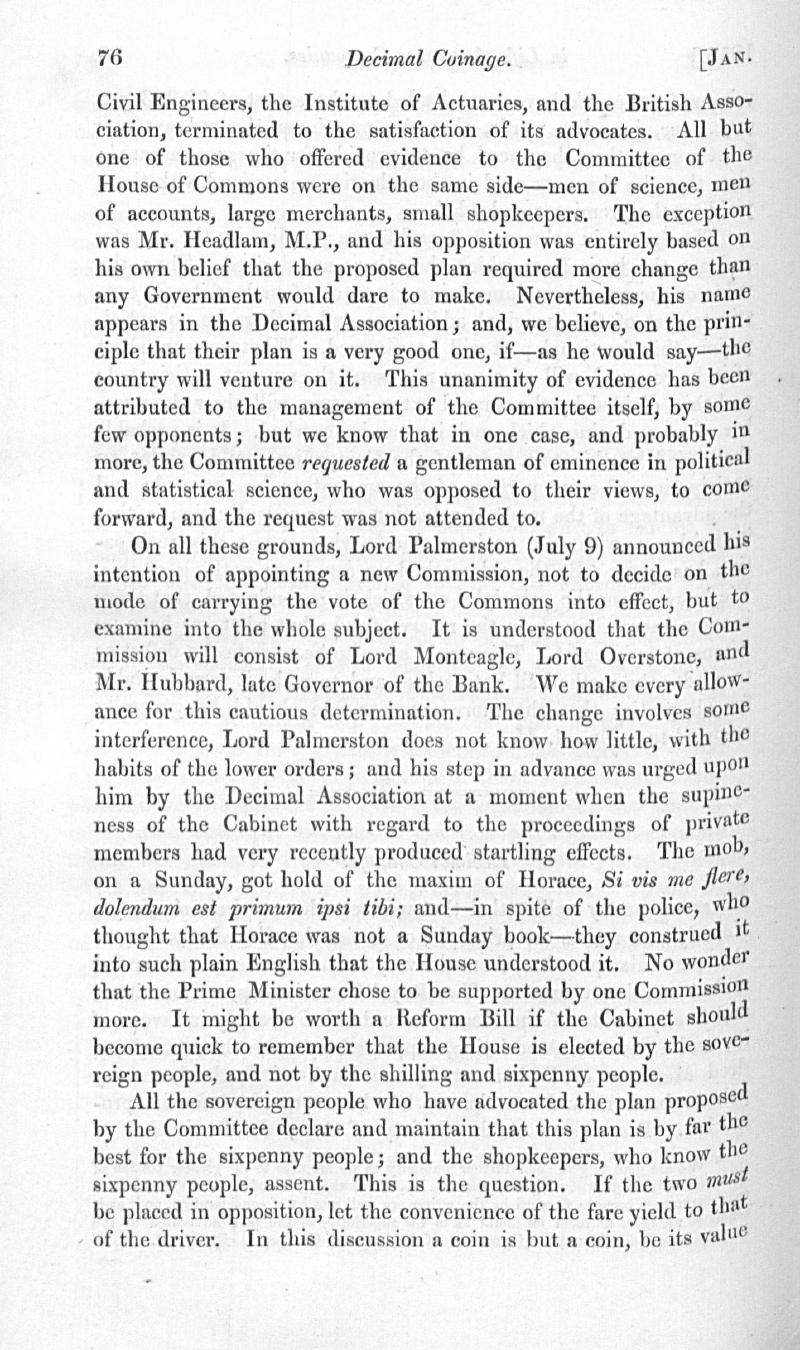No CrossRef data available.
Article contents
Decimal Coinage
Published online by Cambridge University Press: 09 November 2018
Abstract

- Type
- Other
- Information
- Copyright
- Copyright © Institute and Faculty of Actuaries 1855
References
page 78 note * Did the Chancellor of the Exchequer mean that these plans are all one? As if to prove the contrary, ho inserted between the third and fourth a plan of a peculiar kind, which its author calls octagal, meaning perhaps octaval, and then went on with “The only other plan I shall mention … .”
page 97 note * For example: Camden, Clarencieux King at Arms, states that Henry VII. stamped a small coin called a dandiprat, but he did not know its value. Leake, another Clarencieux, a good antiquary, follows Camden in his history of the coinage: and can get no further. We shall presently see this coin of ½d. in its proper place in the arithmetician's list.
† Groat and great are the same word: it means the largest silver coin.




